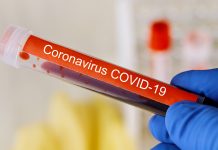Michael Wong and Amy Campbell from the Physician-Patient Alliance for Health & Safety reflect on the fourth World Sepsis Congress discussion, which focused on ways to improve long-term health outcomes post sepsis
Sepsis is responsible for 11 million deaths a year, or one death every 2.8 seconds. Consequently, improvement efforts for sepsis care focus on diagnosing and treating sepsis. Many patients who survive sepsis face long-term health issues that severely impact their quality of life.
Until recently, little attention has been given to post-discharge care for sepsis. In 2021, the Surviving Sepsis Campaign International Guidelines included a recommendation for ‘assessment and follow-up for physical, cognitive, and emotional problems after hospital discharge’.
How do we improve long-term outcomes after sepsis? In a panel discussion led by Imrana Malik, Global Sepsis Alliance, United States of America, experts discussed this issue at the fourth World Sepsis Congress.
Sepsis survivors: Mortality and morbidity
The panellists shared stark research showing the high mortality rate of sepsis worldwide. Fleischmann et al (2015) looked at 15 studies in high-income countries and found a hospital mortality rate of 17%, and Lewis et al (2019) looked at 15 studies in sub-Saharan Africa and found a hospital mortality rate of 19%.
Mortality does not end when a patient leaves the hospital. Bauer et al (2020) found 30-day mortality of 24%, which rose to 32% at 90 days. Sepsis influences mortality in the long term, according to our panellists. As well as high mortality rates during the sepsis infection and higher mortality post-infection, many sepsis survivors face long-term problems.
Tens of millions of people survive sepsis every year, but many suffer long-lasting impairments. These consequences can massively impact patients‘ lives, ranging from difficulty concentrating and fatigue to more severe sequelae such as heart failure and kidney damage.
We now see the same with COVID-19; while most people recover fully, some suffer persistent impairment. Hastie et al (2022) conducted a study in Scotland, which found that only half of symptomatic COVID-19 patients reported a full recovery 18 months after infection. Again, post-COVID-19 problems can vary substantially, from breathlessness to skeletal and muscle alterations.
Risk factors
Sepsis is complicated because it has lots of possible causes – the number one source is pneumonia, but there are many others, from appendicitis to a urinary tract infection. Therefore, understanding the risk factors is challenging, but work has been done in this area.
Some risk factors are external; for example, the longer the time to come to hospital, the worse the long-term mortality. However, some are internal; for example, Kullberg et al (2022) found that gut microbiome composition is associated with protection against hospitalization for infectious diseases.
Risk factors can also be discovered by studying patients experiencing sepsis or other infections. Our panellists found that looking at symptoms and profiling blood cells and plasma through the infection can identify predictors of sustained disease. Analyzing the airway immune cell landscape, for example, can show the risk of ongoing lung damage and the issues that may cause.
Lack of data
While progress has been made, our panellists consistently stated that more research needs to happen in this area. With more knowledge of what puts a person at greater risk of long-term problems, clinicians could identify such people earlier, focus care better, and maximize their impact.
In particular, research is needed that follows cohorts of people over an extended timeframe to understand changes in their conditions. There is currently less data from low- and middle-income countries and those where electronic health records are unavailable, meaning there are gaps in our knowledge of sepsis and the long-term outcomes after sepsis infections.
COVID-19 highlighted the importance of good and timely research, which is enormously helpful. However, research into COVID-19 itself has been hampered by the widespread nature of the disease, meaning that finding a control group without COVID-19 is difficult.
Caring for sepsis survivors
Moving on to caring for sepsis survivors, the panellists were united in the need for good care at every part of the patient journey, from their initial diagnosis to post-hospital care. They also highlighted the need to consider patient characteristics and family factors when providing care.
First, looking at care in the hospital, care must be well-managed as patients prepare for discharge. This can include de-escalating treatments (such as antibiotics and fluids), reviewing new and pre-existing medication, screening for common post-sepsis impairments, and preparing patients for what to expect.
All these improve the patient experience and reduce the risk of rehospitalization, but are not yet universal practice; antibiotic and fluid overload are common, and a third of providers do not provide guidance after discharge from ICU. A study by Taylor et al (2020) reported that only 11% of patients got all four of the following: medications optimized, screening, monitoring, or care alignment processes documented.
But progress has been made. Initiatives are underway to improve pre-discharge care, such as a post-ICU/sepsis consult service piloted by Michigan Medicine, where patients are flagged when they leave intensive care and visited on the ward by a clinician with expertise in long-term outcomes, who can review medication and make a plan for discharge, including guidance for the patient and referral to follow-up clinics.
Initiatives here include post-sepsis/ICU clinics, where patients can access a range of different services in one place; peer support to enable sharing of experiences; a post-sepsis nurse navigator, who provides remote support to patients, ranging from monitoring their symptoms to coordinating care (Taylor et al (2022) found this led to a lower risk of rehospitalization or mortality).
Paediatric sepsis survivors
Most of these initiatives focus on adults, but work is underway to improve outcomes for children as well. One in five survivors of pediatric sepsis experienced a new or worsening health condition (Carlton et al (2022)), and one in three did not regain their pre-sepsis quality of life a year after infection (Zimmerman et al (2020)).
Tailoring care towards children can help with this – the PICS-p framework, for example, focuses on post-intensive care support for children by looking at their social and mental health as well as physical and taking their wider family circumstances into account as well as their specific needs. The Children’s Hospital of Philadelphia has set up a follow-up program for sepsis survivors, where a nurse coordinator meets with families to educate them about sepsis and provides a follow-up service to help with referrals, etc.
Learning from COVID-19
These lessons in post-sepsis care can often be transferred to post-COVID-19 care, such as the need to focus on long-term outcomes and engage the family and the patient. And the reverse has also been the case. Telehealth, for example, expanded substantially during COVID-19 and could be very helpful for sepsis survivors.
Conclusion
Sepsis remains a serious worldwide issue in terms of mortality and morbidity. While progress has been made in understanding the risk factors that increase the risk of death or disability, more research is needed. Similarly, in caring for sepsis survivors, progress has been made (especially in post-discharge care), and lessons learned from COVID-19 care can help, but more needs to be done.











